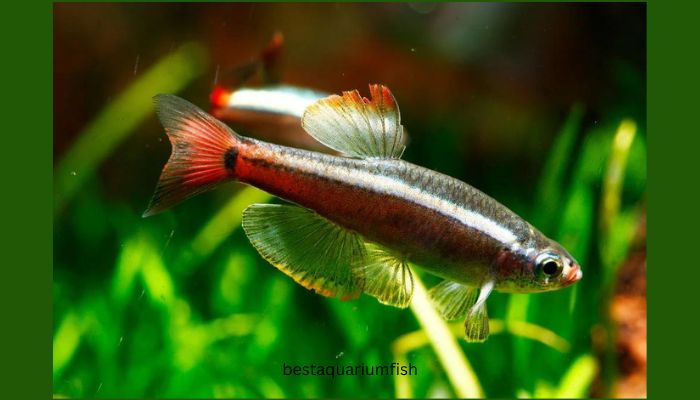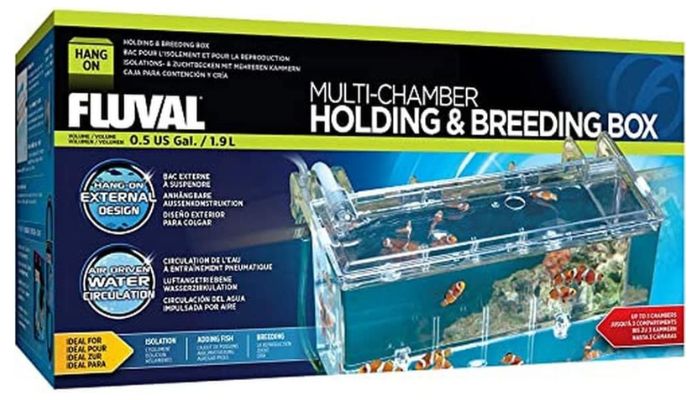White Cloud Mountain Minnows (Tanichthys albonubes) are a popular choice for both beginner and experienced aquarists. These small, colorful fish are not only easy to care for but also have fascinating breeding habits. However, a common concern among fish enthusiasts is whether or not white clouds eat their fry. In this article, we’ll dive deep into this topic, offering helpful insights, practical tips, and everything you need to know about breeding white clouds and ensuring the survival of their fry.
Understanding White Cloud Mountain Minnows
Before we address the main question, let’s take a closer look at the White Cloud Mountain Minnow. These fish, originally from the mountain streams of China, are hardy, peaceful, and perfect for community tanks. They thrive in cooler water temperatures, making them an ideal choice for unheated aquariums.
White clouds are schooling fish, meaning they prefer to live in groups. They have a streamlined body with a silvery hue, a red or orange stripe along their side, and a bright red tail. Their small size and peaceful nature make them an excellent choice for a variety of tank setups.

Do White Clouds Eat Their Fry?
Now, let’s tackle the burning question: Do white clouds eat their fry? The short answer is yes, they can. However, this behavior isn’t as straightforward as it might seem. Several factors can influence whether adult white clouds will consume their offspring.
Factors Influencing Fry Predation
Tank Size and Setup
A well-planted tank with plenty of hiding spots can significantly reduce the chances of fry being eaten. White clouds, like many fish, may consume their young if they see them as easy prey. However, in a densely planted tank with lots of cover, the fry have a better chance of survival. Floating plants, dense foliage, and fine-leaved plants like Java moss are excellent options.
Hunger and Feeding Practices
Hungry fish are more likely to snack on their fry. Ensuring that your white clouds are well-fed can decrease the likelihood of them turning on their young. Regular feeding with a variety of foods, including high-quality flakes, pellets, and live or frozen foods, can keep their appetites satisfied and reduce fry predation.
Population Density
Overcrowding can lead to increased stress and aggression among fish, which might result in fry being eaten. Maintaining a balanced population in your tank can help reduce this risk. A good rule of thumb is to keep white clouds in groups of at least six, but avoid overcrowding the tank.
Breeding Behavior
During spawning, white clouds scatter their eggs over plants and substrate. The parents do not guard the eggs, and once spawning is complete, they may consume the eggs or fry if they come across them. Providing ample hiding spots for the eggs and fry can help protect them during this vulnerable period.
How to Increase Fry Survival
If you’re looking to breed white clouds and want to ensure the highest survival rate for the fry, here are some effective strategies:
Use a Separate Breeding Tank
One of the most effective ways to protect fry is to breed white clouds in a separate tank. This allows you to control the environment more closely and reduce the risk of the fry being eaten. A 10-gallon tank is sufficient for breeding a small group of white clouds. Make sure to add fine-leaved plants or a spawning mop where the fish can deposit their eggs.
Provide Plenty of Hiding Spots
As mentioned earlier, a densely planted tank offers fry a better chance of survival. You can also add decorations like rocks, driftwood, and caves to create additional hiding spots. Fry will naturally seek out these areas to avoid being noticed by adult fish.
Feed the Adults Well
Before and after spawning, ensure that the adult white clouds are well-fed. Offering a varied diet of high-quality foods can keep their appetite satisfied and reduce the likelihood of them eating the fry.
Use a Fry Trap or Breeder Box

Fluval Multi-Chamber Holding and Breeding Box, Large – Up To 3 Separate Housing Compartments
| Brand | Marina |
| Target Species | Fish |
| Material | Glass |
| Tank Volume | 1.9 Liters |
| Product Dimensions | 10.7″L x 5.7″W x 5.8″H |
| Item Weight | 1.2 Pounds |
A fry trap or breeder box is another effective tool for protecting fry. These devices allow fry to swim to safety while keeping the adults out. Once the fry hatch, they can swim through small openings into the trap or box, where they are safe from the adults.
Remove Adults After Spawning
If you’re using a separate breeding tank, consider removing the adults once they’ve spawned. This ensures that the fry are safe from predation and can grow without the threat of being eaten by their parents.
Fry Care and Feeding
Once your fry have hatched, the next step is to ensure they receive proper care and nutrition. White cloud fry are tiny and require special attention during their early stages of development.
Feeding Fry
Fry need small, frequent feedings to support their rapid growth. Infusoria, newly hatched brine shrimp, and crushed flake food are ideal options for the first few weeks. As the fry grow, you can gradually introduce finely crushed flakes and other small foods. Be careful not to overfeed, as uneaten food can quickly foul the water.
Water Quality
Maintaining excellent water quality is crucial for fry survival. Regular water changes are essential, especially in a small breeding tank. Use a sponge filter to avoid sucking up the tiny fry, and monitor ammonia, nitrite, and nitrate levels closely.
Temperature and Lighting
While white clouds can tolerate a range of temperatures, fry do best in stable conditions. Keep the water temperature between 64°F and 72°F (18°C to 22°C). Lighting should be gentle, with a day-night cycle to mimic their natural environment.
When Can Fry Be Reintroduced to the Main Tank?
After a few weeks of growth, your fry will start to resemble miniature versions of their parents. At this stage, you may wonder when it’s safe to reintroduce them to the main tank.
Generally, fry should be at least 1 inch (2.5 cm) in size before being moved to a community tank. By this time, they are usually large enough to avoid being eaten by adult fish. However, it’s still important to observe the behavior of the other fish in the tank to ensure they don’t become aggressive toward the fry.
Common Questions About White Cloud Fry
1. How many fry do white clouds typically produce?
White clouds can produce anywhere from 30 to 100 fry in a single spawning. The exact number depends on the health, age, and size of the parents, as well as environmental factors. While not all fry may survive, following the tips mentioned above can significantly increase their chances.
2. How long does it take for white cloud fry to grow?
White cloud fry grow relatively quickly compared to some other species. Within two to three months, they can reach a size where they resemble adult fish and can be introduced to a community tank.
3. Can white clouds breed in a community tank?
Yes, white clouds can breed in a community tank, but the survival rate of the fry is generally lower due to predation. If you want to breed white clouds and raise the fry successfully, a separate breeding tank is recommended.
4. What is the ideal water condition for breeding white clouds?
White clouds are not particularly fussy about water conditions, but for breeding, slightly cooler temperatures between 64°F and 72°F (18°C to 22°C) are ideal. The water should be clean and well-oxygenated, with a pH between 6.0 and 8.0. Adding a sponge filter can help maintain water quality without risking the fry.
5. How often can white clouds spawn?
White clouds can spawn every few weeks under the right conditions. Providing a healthy diet, maintaining water quality, and ensuring they have a comfortable environment will encourage regular spawning.
Conclusion: Do White Clouds Eat Their Fry?
In conclusion, do white clouds eat their fry? Yes, they can, but this behavior is influenced by several factors, including tank setup, feeding practices, and population density. By understanding these factors and taking steps to protect the fry, you can significantly increase the chances of their survival.
Breeding white clouds can be a rewarding experience, and with the right approach, you can enjoy watching these tiny fish grow into healthy adults. Whether you’re a beginner or a seasoned aquarist, following the tips in this guide will help you successfully breed white clouds and raise their fry with confidence.
